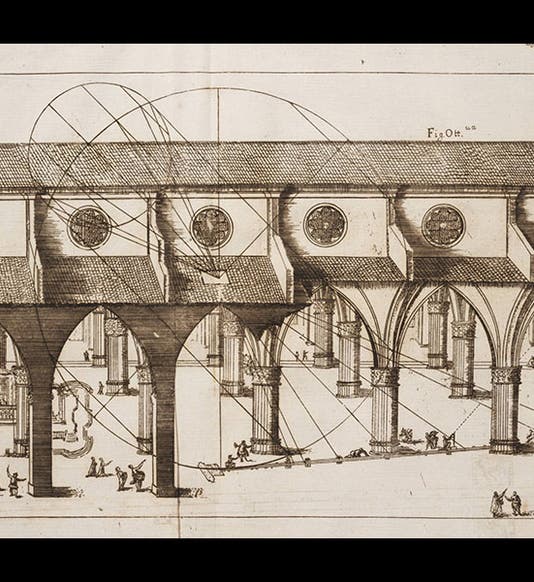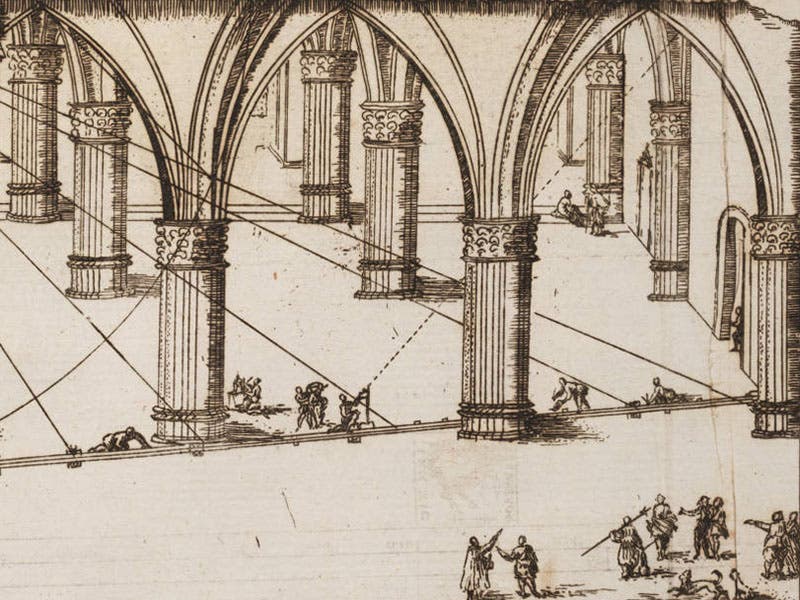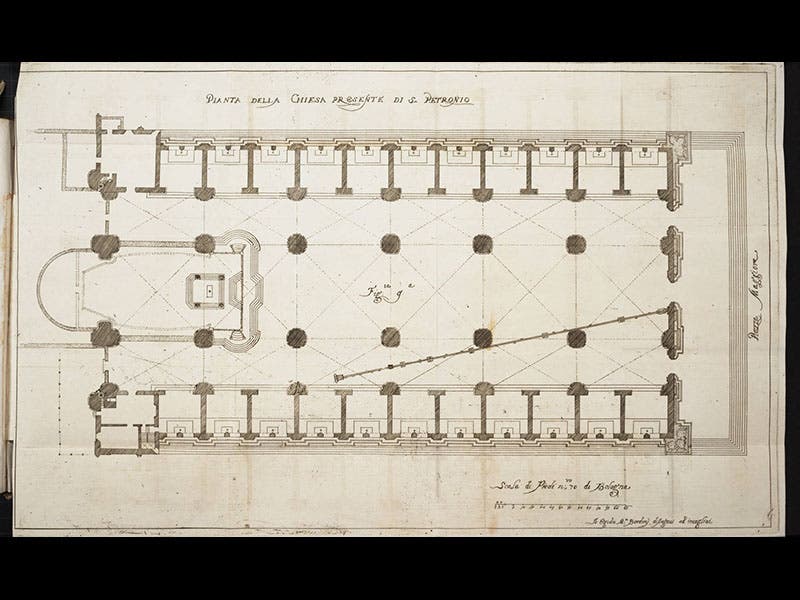Scientist of the Day - Giovanni Domenico Cassini
Giovanni Domenico Cassini, an Italian/French astronomer, was born June 8, 1625. In 1655, Cassini laid down a meridian in the floor of the church of San Petronio in Bologna. Many churches had a meridian, which was simply a line inscribed on a wall or floor, coupled with a an opening on the ceiling to admit a shaft of sunlight, that allowed one to track the changing position of the sun at noon through the course of the year. The meridian that Cassini built at San Petronio was over 200 feet long, made of brass, with an aperture 90 feet above the floor. He was barely able to squeeze the line between two of the massive pillars holding up the roof. During the course of the year, the projection of the noon-time sun travels slowly back and forth along the line, allowing one to use it as a calendar. Cassini published a book on his achievement in 1656, and the fame he derived from its construction was one of the reasons he was invited to go to France to become the astronomer for King Louis XIV in 1668. Cassini published a second work on the Bologna meridian in 1695, which contains a fold-out engraving of the interior of the church (see first image above, and a detail in the second image). The book also has a floor plan of the cathedral, where one can see the meridian wedged in between two of the pillars (third image).. We have both of Cassini's meridian books in our History of Science Collection. Two final photographs show the meridian as it appears today (fourth image) and a detail of the meridian, capturing the image of a partial solar eclipse as it appeared on Mar. 29, 2006 (fifth image). Dr. William B. Ashworth, Jr., Consultant for the History of Science, Linda Hall Library and Associate Professor, Department of History, University of Missouri-Kansas City. Comments or corrections are welcome; please direct to ashworthw@umkc.edu.











